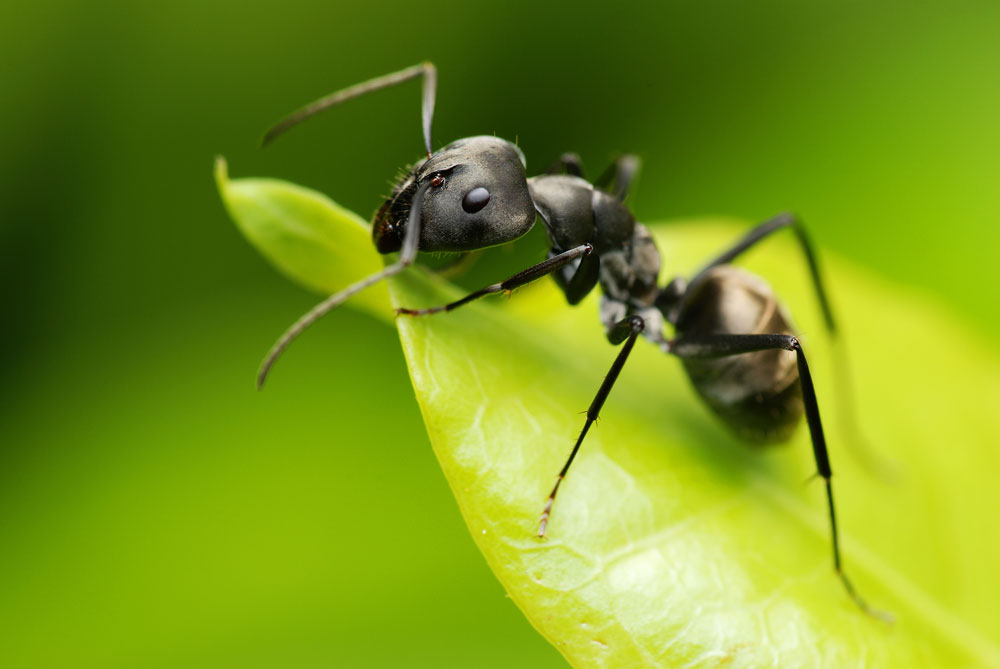Black Ants

The little black ant. Yes, that’s what they’re actually called. Little black ants (Monomorium minimum) are annoying and numerous pests. A single colony can consist of more than 2,000 ants that are active both day and night. They can be found in yards and houses all over the United States, especially the eastern half of the country and southern California.
The biggest difficulty we face with little black ant control is their versatility. They will nest in almost anything. Outside they will be in the ground, trees, mulch, cracks, sidewalks, driveways, rotted wood, under rocks, etc. Indoors, little black ants will nest in woodwork, masonry, wall voids and even under carpets. When it comes to food, they will eat anything. Favorites are sweets, vegetables, fruits, meats, dead insects, plant secretions and grease. They’ll even eat honeydew, which is a secretion given off by plant suckers like aphids and scales. Following the scented trails they leave, little black ants collect food and transport it back to their nests. They can carry some pretty big pieces, too—up to 20 times their own weight. Despite their strength, getting rid of black ants isn’t all that difficult. The problem is that it’s temporary. Once gone, you can count on them coming back eventually.
A clean house is the first step in any pest prevention. A little black ant will eat anything and everything, so do your dishes. The little bits and pieces of food left on dirty dishes, pots, pans and silverware make a nice meal for a little black ant. Clean your stoves, countertops and tables diligently after every meal or snack. Crumbs on the floor are an easy food source too, so develop a habit of sweeping, mopping and vacuuming regularly. Also remember to take out your trash often and rinse out bottles and cans before ants can find them.
Protect your food products, even if your kitchen is spotless. Little black ants can and will invade your home in search of food. Store everything in airtight containers, preferably plastic containers with snappy lids, tin/aluminum canisters or jars with rubber gaskets. This includes, but is not limited to, flours, sugars, pastas, cereals, chips, butter and oils. If it’s something you can eat, ants will eat it too.
Before you attempt to rid your home of ants, be sure you know where they’re coming from. Try to determine if they’re nesting inside your home or sneaking in from outdoors. This will help you target the colonies more effectively later. When you see ants inside our home, watch them for awhile and see what little nook or cranny they are coming from and retreating back into. Spend some time outside looking around for ant colonies.
If you see ants outside, pay attention to how they are getting into your home so you can block the opening. Even if you don’t spot ants outside, search for any openings and seal them off. Once you get a little black ant infestation under control, avoid future infestations by caulking any cracks in the foundation along with openings around electrical wires, cables, phone lines, plumbing, etc.
Clean your yard and along your house. While little black ants do sometimes live in your home, they usually nest outside. Remove any large rocks, logs, pavers, stepping stones, stumps, mulch, and any objects little black ants and other pests might live beneath. It’s also a good idea to trim tree and shrub branches that are up against your house. Black ants will sometimes use these to get into your house.
Because little black ants gather food and take it back to their nest, ant baits are probably the most effective and easy-to-use ant killer. Ant baits don’t kill ants immediately, which allows them to take it back to the nest and infect the entire colony. Ant baits are generally applied or placed directly in the ants’ scented trails.
To control ants outside, broadcast a long-lasting insecticide throughout the entire yard and garden area. Granule applications will last longer than liquid applications, however, liquid applications are more economical when treating large areas and are also very effective in controlling mosquitoes.
For more information on treatment options and applications instructions, visit your nearest Pestop location.

